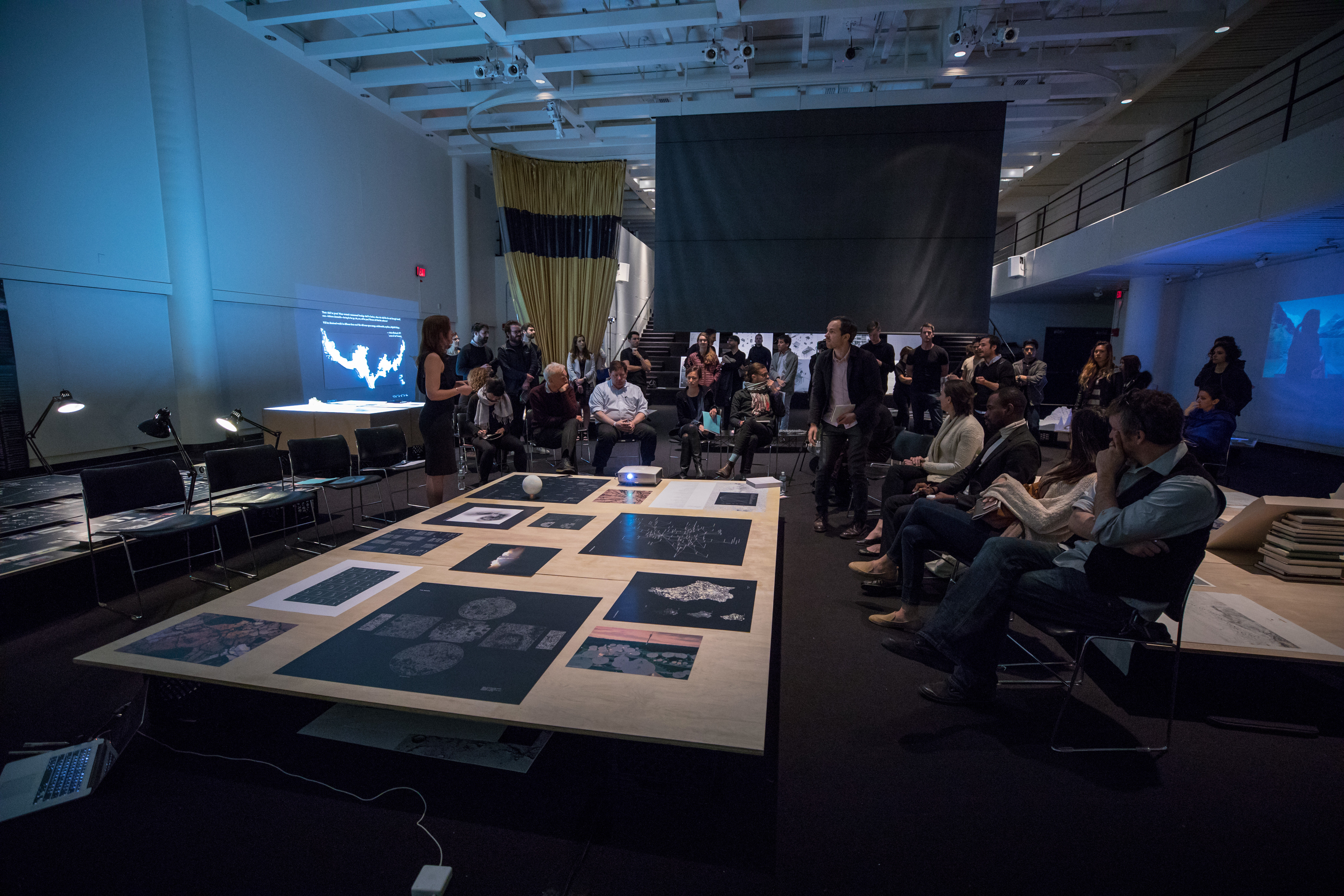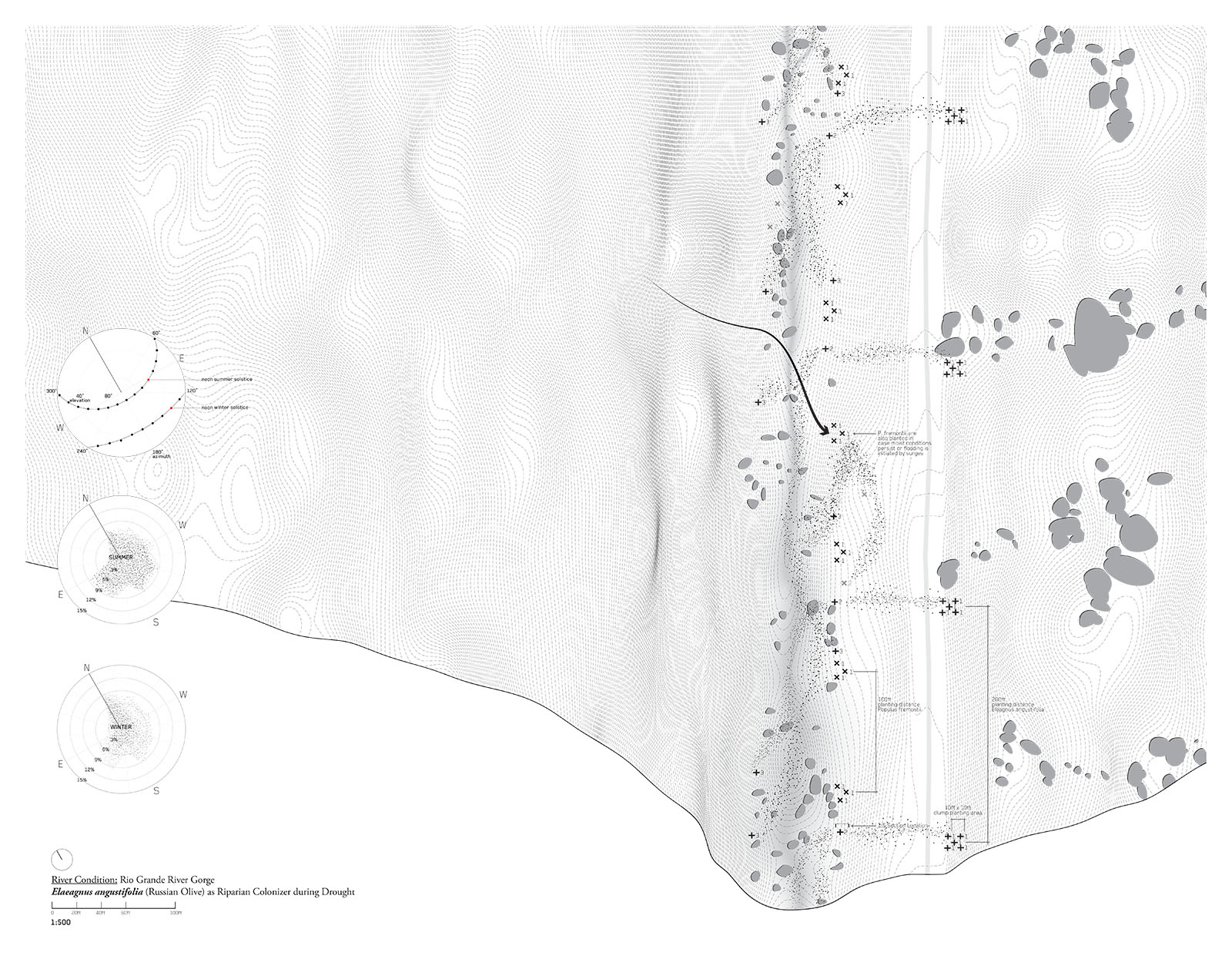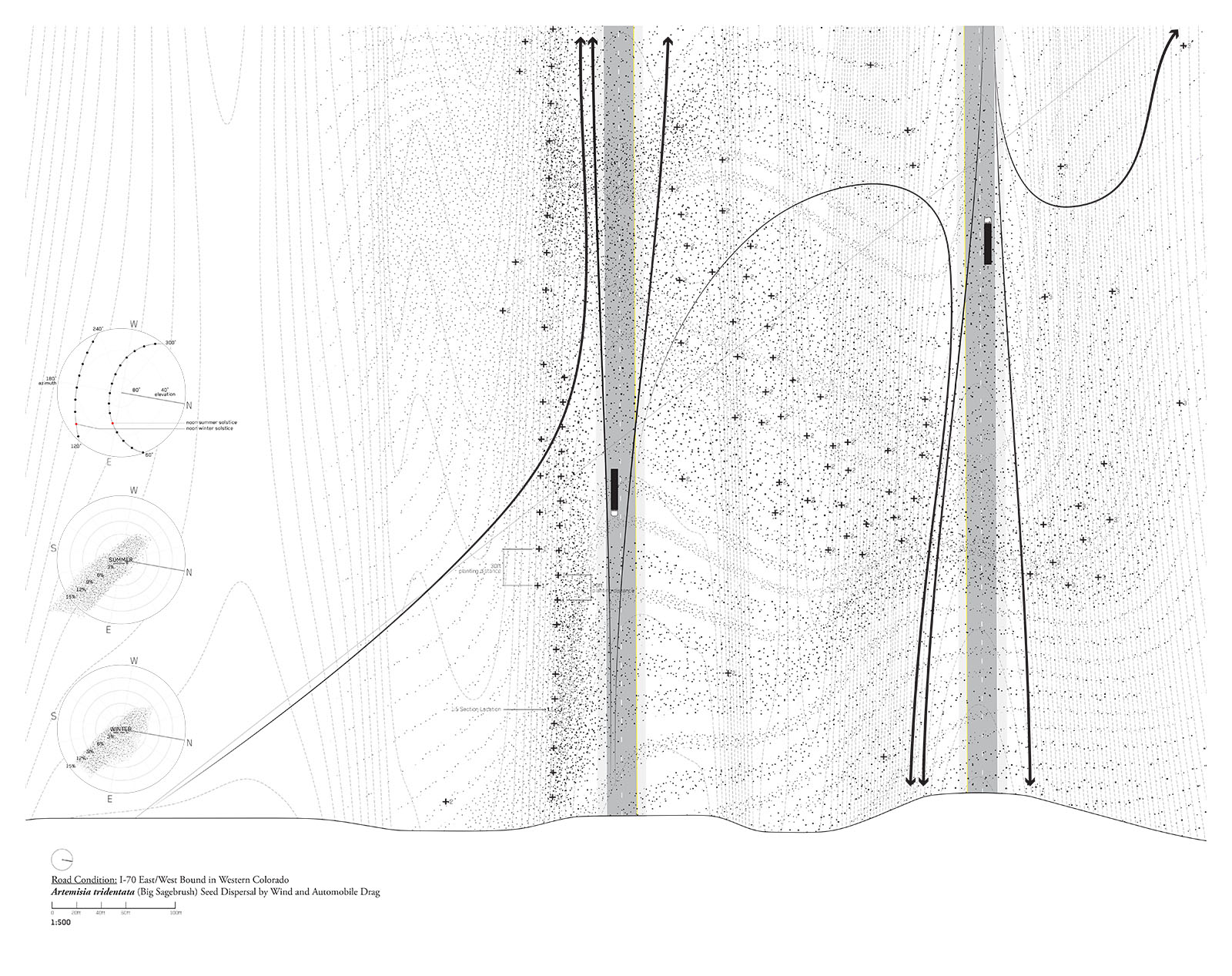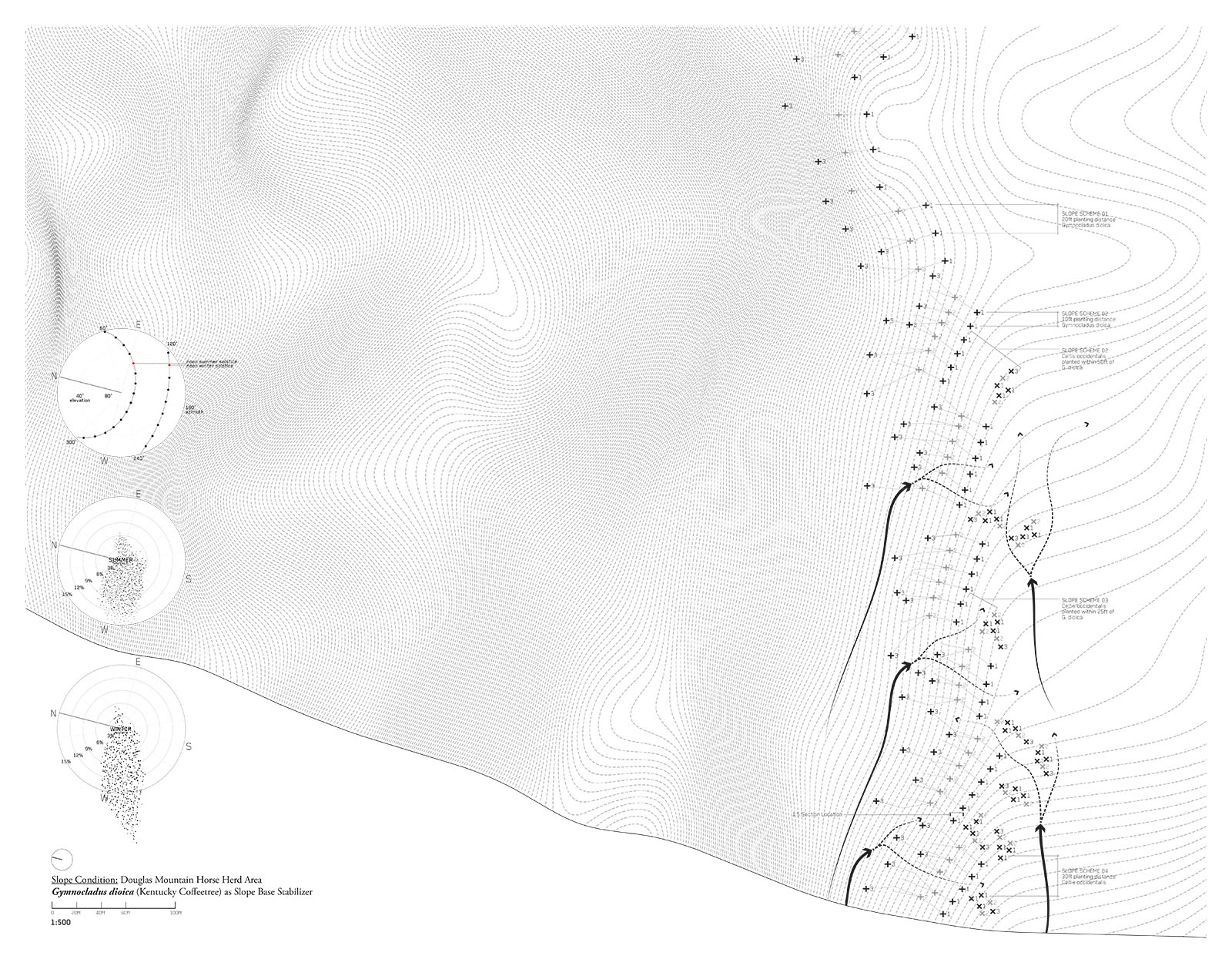Living Conservation

by Mary Catherine Miller (MDes ’17)
Prominent ecologists and biologists have published extensively on the power of movement in plants, yet landscape architects tend to overlook this dynamism, as signing plants to fixed positions within a site. Location plans, species lists, seasonal color graphs, and successional predictions are the ways in which landscape architects treat their primary medium. These practices position plants as static objects secondary to human and non-human animal activities. The field of environmental conservation, with which landscape architects have become increasingly involved, suffers from similar problems, typically treating landscapes as scenographic. Living Conservation develops methods based on an understanding of plants as mediating agents of atmosphere and earth, challenging the received traditions of both landscape architecture and conservation.
As individual organisms plants interlock with their surroundings by simultaneously transforming and being transformed by variations in moisture, temperature, and minerals. As entire species plants operate through the same hydrological, atmospheric, and geological conditions, but at a vast scale, creating ecosystems while also adapting to new ones at the limits of their ranges. It is in thinking of plants telescopically, from roots to ranges, that the power of movement in plants lies.
Living Conservation offers a climate- and range-based alternative to current boundary-focused conservation practices, specifically in the BLM Lands of the American West. The project asks, what if, instead of planning with property lines and other static boundaries, we plan with seed dispersal and other aspects of plant movement? What if conservation areas expand, contract, and shift over time like tides? Living Conservation challenges both landscape architecture and conservation to embrace the power of plants across spatial and temporal scales.




